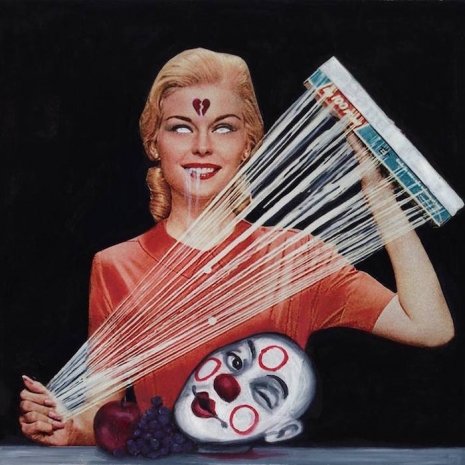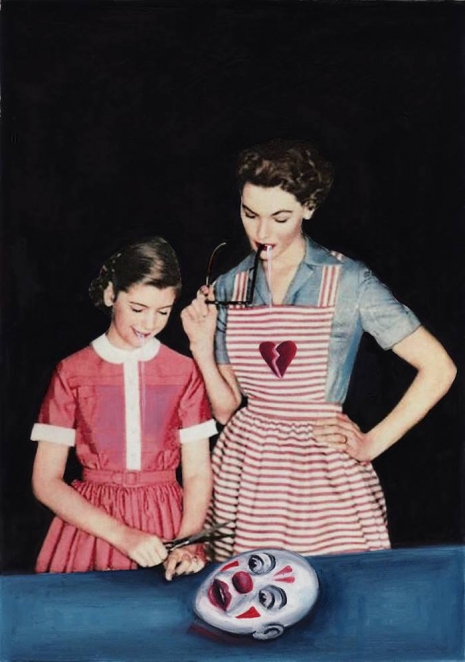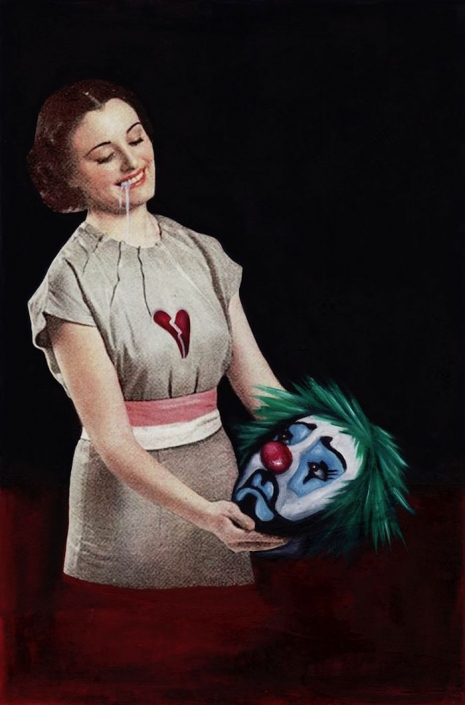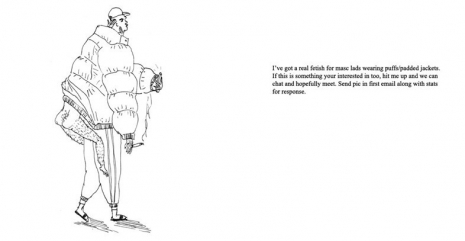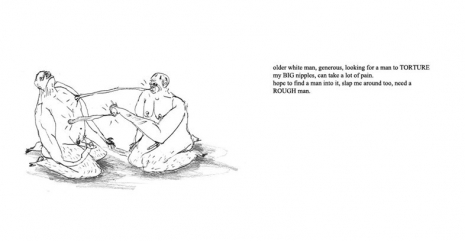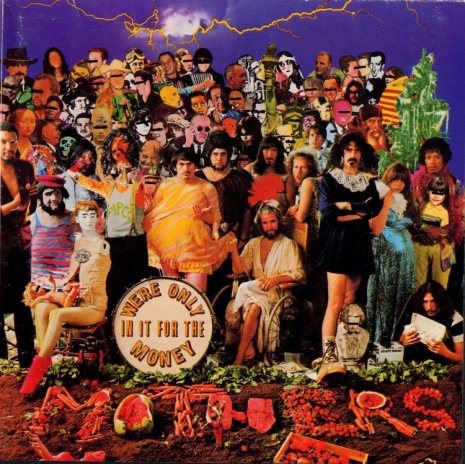
Taking Tiger Mountain is a strange film with an even stranger back story. It all began in 1974 when thirtysomething filmmaker Kent Smith saved up enough dough from making educational shorts to go off and produce his dream first feature. The folly of many first-time directors is knowing when to curb their ambitions. Smith was certainly ambitious—maybe overly so. He had an idea to make a kinda art house movie set in Tangiers—something inspired by Albert Camus’ novella The Stranger. There was no script, just a poem Smith had written on the kidnapping in 1973 of sixteen-year-old John Paul Getty—heir to the Getty oil fortune. Smith thought of his poem as the film’s framework. Add in a touch of Jean-Luc Godard and hint of Fellini and his debut feature was gonna be just peachy.
So, Smith had ambition—check. A basic storyline—check. And a nineteen-year-old actor by the name of Bill Paxton. Check.
Paxton was a hunk. A pin-up. The type of young actor who had I’m gonna be a big movie star pumping out of his pores. He had the looks, the demeanor and the talent. He was also fearless—as anyone would have to be if they were going to hook-up with Smith on a madcap movie-making adventure.
They packed their bags, leased some Arriflex Techniscope equipment and headed off to France. On arrival at Charles de Gaulle airport in Paris, they discovered that their equipment had been lost in transit. It was the first of several small obstacles that eventually turned the film onto a different course. When the pair were eventually reunited with their equipment, they hired a car and headed for Spain. But the roads were like parking lots—gridlocked with holidaymakers on their way south to the coast. Eventually after a long, slow, infuriating drive, they made it to the ferry terminal and waited for the first ferry to take them across the waters to Tangiers.
As Paxton told Variety in 2015:
We got to Tangiers around midnight, and all of our equipment was impounded because we hadn’t paid the baksheesh. We got out in about 48 hours, and my attitude was “What the f–k?” I remembered I knew someone in South Wales when I was a foreign exchange student, so we drove there, and that’s where we shot the film.
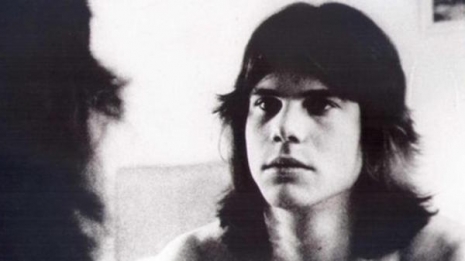
A young Bill Paxton as seen in the film.
Paxton and Smith traveled back up through Spain and France to England and then to Wales where things got “even crazier.”
We had purchased black-and-white short ends (film stock) from the film Lenny, and we sort of shot things as we came across them.
One guy had a Kenyan vulture, so we used that for a scene of eating my entrails. We met some girls and talked them into doing some nude scenes with us.
Basically it was a bunch of hippies running around naked. It was all silent, black-and-white footage.
They shot ten hours of footage—but what the hell to do with it all? They returned to the States. Paxton began making inroads into big screen movies, while Smith sat with his rushes wondering how to make a movie out of it.
In 1975, Smith showed the footage to a student at the University of Texas called Tom Huckabee. Nothing happened until Smith relinquished the rushes over to Huckabee in 1979. That’s when Huckabee started logging and assembling the ten hour’s worth of material together as he explained to Beatdom:
I started building scenes using the script they had which was loosely based on the J. Paul Getty kidnapping. There was no sci-fi element, no assassination, no prostitution, no feminism, or brainwashing. It was a dream film about a young American waking up on a train – with amnesia, maybe – who wanders into a Welsh town, meets a lot of people, has adventures, bad dreams, and then gets killed on the beach, or does he?
Once I had assembled all their footage into what seemed like a narrative flow, I started thinking about what the story could be. I didn’t like their story much, it was too languid for me, disconnected, but mostly they had only shot half of it and I knew I couldn’t go back to Wales. I’d been reading Burroughs and a lot of other avant-garde, transgressive, and erotic literature. Story of the Eye was a big influence. I started reading The Job. I got the idea that he was an assassin… and maybe the idea to set it in the future.
Huckabee’s friends were all chucking in their two cents’ worth. A “mysterious guy named Ray Layton” had “the idea to make it about feminist terrorists brainwashing Billy…. and the prostitution camps.” Then Huckabee read William Burroughs’ novella Blade Runner (a movie) and the whole thing began to take shape in his mind.
I lucked into finding a backer who promised $30,000, and that’s when it got real. I remembered seeing another short film that Kent and Bill had made; a thinly veiled homoerotic portrait of Bill, called D’Artagnan. I thought it could be used to represent Billy’s brainwashing. By then I’d acquired the MKUltra transcripts and was heavily into The Job.
Huckabee approached Burroughs and obtained his permission to adapt Blade Runner into his movie. This was now the early 1980s, Ridley Scott was making a movie version of Philip K. Dick’s cult sci-fi book Do Androids Dream of Electric Sheep? Scott had also approached Burroughs to buy his title Blade Runner for his movie.
It took at least a year to write the script to conform to the footage, which by the way was 60 minutes. I knew I needed 75 min. minimum for it to be a feature. So I built five minutes of dream sequences out of outtakes, including one where I threw the film in the air and put it together as it came down – cheating a lot.
I should mention that I was fairly regularly during this time, maybe once every one or two months, on acid, mushrooms, and baby woodrose seeds… this, added with all the experimental film I was seeing, and avant-garde and erotic and left wing and feminist political literature I was reading, kept my mind open to outré thematic and formal tropes… so, say, if a scene wasn’t working I could always run it upside down and backwards… Also by then I was thoroughly versed in MKUltra brainwashing, psychic warfare, so in that respect I think I was getting a lot of that independently from Burroughs, maybe from the same source he was getting it.
Then I wrote the opening scene and shot it… and started dubbing in dialogue. I forgot to mention Woody Allen’s Tiger Lilly as an influence. First I hired a lip reader to tell me what the characters were saying and many of them were speaking Welsh.
Huckabee finished his film. Now called Taking Tiger Mountain—the title lifted from a Chinese opera—it was released in 1983. The film was described as a “unique sensory experience.” Set the near future Taking Tiger Mountain follows Paxton as:
Billy Hampton, a Texan who [has] fled from occupied America to British island in order to avoid compulsory military service. Once there, he [is] abducted by a group of sophisticated feminist terrorists, who have been opposing the oldest profession [prostitution] legalization, creating assassins by brainwashing and then setting them on the prostitution camps leaders. (They also specialize in redirecting sexual orientation and sex change operations.)
At the start of the film:
[A] quartet of middle-aged women analyze Billy and persuade him to believe that an aging major is actually a tiger sent by God to kill him. That prologue is a combination of sequences with Huckabee’s signature and those from a short film that Smith and Paxton had been working on prior to their arrival to Wales. What follows could be described as a sporadically wet psychotropic nightmare, with hypnotic soundtrack composed of gloomy drones, overdubbed dialogues, confusing monologues and omnipresent radio announcements about the war [and its] aftermath and the use of thermonuclear weapons on the United States…
More ‘Taking Tiger Mountain’ after the jump…







